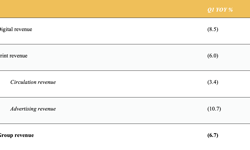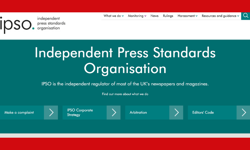You can’t knock our regionals. They have been with us for over 200 years (the Yorkshire Post celebrates its 250th this year), attract growing advertisement revenues and make wonderful profits. In terms of size they attract only slightly less advertisement revenue than our entire TV industry.
Yet, with one or two exceptions, an important sector of this industry – its 90 strong stable of paid-for dailies - has been losing sale pretty steadily over the last thirty years, and there must come a time when this will start to impact revenues. So one favoured strategy is to create as much cash from them while the going is good to fund the growth of the more modern and more fashionable media.
Are the UK’s paid-for regional dailies thus doomed to genteel decline? Is the management task just one of managing decay in the most profitable way? Not necessarily. With modern management practices and a change in culture the paid-for daily press has the potential to reassert itself with vigour. May I therefore invite you briefly to measure the practice of circulation management against the 4 ‘P’s of marketing - product, price, promotion and place.
Product
We’ll start with product. There is nothing wrong with the editorial quality and appeal of most daily regionals but the problem is that editorial is not sufficiently measured - and managing anything is difficult without measurement. I do not refer to the exhaustive research exercises conducted every so often in surely every UK regional newspaper. Rather I seek evidence that newspapers are in daily and deliberate contact with their customers - their readers - and are discussing with them in depth and in volume their attitudes to the opinions and information that they have just been presented with.
I am not talking about a daily review of readers letters. I seek evidence of a true ‘daily dialogue with the marketplace’. If Virgin trains can do it; if easyJet cares enough to get me regularly to complete a questionnaire then we in the regional press can do it too. And we are.
Andrew Kinsey, regional newspaper sales & promotions manager of the South Wales Argus, for example, gathers much daily information about reader attitudes through his very interesting canvassing programme. Whenever a prospect rejects an offer of home delivery he asks them to explain their reasons, which he logs in to a database under 20 ‘resistance codes’. To those who state an editorial reason (like "not enough local news" or "not interested in the newspaper") he sends a questionnaire asking for more information and reiterating the home delivered offer. Two things happen. 4% of recipients take up the repeated offer of home delivery and 8% send back a completed questionnaire. The returned information is logged in his database and regular and detailed information such as the content of the newspaper is sent to editorial, who are encouraged to call responders to discuss. This helps the editorial team address the concerns of its readers.
The South Wales Argus is one of the few UK regionals to show consistent circulation gains - averaging some 2.5% over the last five years – and this deliberate and designed dialogue with readers is but one of the reasons why.
There are other ways of measuring product. The Times newspaper, for example, operates an internet-based research programme where a substantial four-figure panel of readers is invited to respond each month to detailed questions about the newspaper. Another internet-based research firm asks a panel to respond to five questions about the newspaper they read to assess their ‘product satisfaction’. It sounds like the car industry, but this ‘customer satisfaction index’ is measured and published each month giving editorial comparative information about how well they are being received by their audience. There is nothing to stop a regional newspaper from assembling a panel of responsive readers and doing the same, and measuring trends in customer satisfaction at least month by month.
Price
Let’s now turn to the second ‘P’ of marketing - price. For most of us, we have one price, our cover price, yet we know that newspaper sales are generally very sensitive to even small changes in price. So why don’t we use price as a marketing tool? We would be amazed if our neighbour on a RyanAir flight had paid the same price as we had, so why don’t we in the regional press vary our prices to meet our sales objectives?
Step up another regional pioneer - Clare Anderson, circulation director at the Sheffield Star - who imaginatively uses price as a weapon to win sale. Clare recognises that many in her catchment have not even considered reading a paid-for local daily so she telephones them. Her telecanvassers find that many who do not buy her title would consider doing so if they were offered a trial discount. She offers them a booklet of personalised and dated vouchers allowing their purchase of that day’s newspaper for 10p, through retail, over an eight week period. Seven weeks later she calls them again to discover how they used the vouchers and what they thought of the newspaper, offering them a further eight weeks of vouchers at 20p. Through this process Clare leads previous non-buyers up the ‘loyalty ladder’ to the point where some accept home delivery. Clare not only creates new home delivered customers but, through her vouchers, is building new and audited sale.
Promotion
Promotion is our third ‘P’ of marketing. For many of us this means acquiring new home delivered sale through door-to-door canvassing. But by doing this we may unwittingly be eroding rather than building our sale. Why?
Firstly, by offering those regular and loyal 6–day buyers of our title a home delivery deal we are disrupting a perfectly satisfactory buying pattern. Man and boy I may have been stopping off from work to buy my copy of the Evening Gazette from Eddie’s round the corner, then the wife tells me not to any more because she has signed up to home delivery (‘We can cancel when I’ve got the Mark’s vouchers they’re sending me and he was so persistent’). Ten weeks later we do cancel but do I then go back to my previously loyal buying behaviour? I might .. but certainly not everyone will.
So, as Andrew Kinsey from the South Wales Argus will tell us, don’t disrupt loyal purchasers. Instead go for the occasionals and irregulars - get them from an average and irregular two day buying pattern to a regular six day habit and boost your ABC without disrupting loyal and regular buying. Then go for retention.
Retention is the big and hidden secret of increasing newspaper sale. The problem is that retaining our buyers is not sexy, yet, as David Ogilvy told us, retaining a customer is five times cheaper than creating a new one. What tends to happen is that we acquire a new customer for home delivery (it suits us even if it doesn’t suit the customer) and then assume that our product is so great that the new reader will stay with us for the remainder of their natural lives without any TLC from us - not even a card at Christmas! The reality is brutally different. The home delivery we sold at such cost lasts about ten weeks before it is cancelled because we put no effort into keeping that customer and keeping the relationship alive. Just imagine the impact on our newspaper sale if we put as much effort into keeping the relationship going as we put into starting it!
That’s why the Zero Hora newspaper in Brazil says it has been so successful. In an environment where the newspaper industry in Brazil has cumulatively lost 19.6% of its sale in 12 months, Zero Hora put on 5.7%. Why? They say because they put more money into subscriber retention than any other part of the marketing process! Their large and skilled call centre teams know the crucial times in the relationship when cancellations are most likely and have a wide discretion to negotiate. When the UK’s national press is achieving an average four year subscription lifetime (through many strategies, like prepayment through continuous direct debit) surely it is possible for the regional press to move from 10 to 15 weeks, and to transform itself as a result?
Place
My final ‘P’ is place - distribution. One of the key reasons why Andrew Kinsey has so successfully retained his home delivered customers is that he is obsessive about delivery service quality. He can control delivery quality because he has a full 13,400 of his 31,000 sale (43%) directly delivered through a system that allows for the daily variety that customers demand and that measures and sustains the quality of the delivered experience. He cites the indifferent delivery performances of unmeasured agents as one reason for the poor retention rates of the industry.
So we will need to measure better and to retain more deliberately. We will have to learn that ‘listening is better than targeting’ and come to terms with our need to treat people as individuals and relate to them where they are, rather than where we would like them to be. But we will also need to recognise the profound change we will require in the role of our circulation managers if we are going to turn around our regional daily paid-fors. Now the (very important) task of circulation management is largely logistical, focussing on availability, delivery, canvassing and point–of-sale promotion. Tomorrow we will be also asking them to take responsibility for the quality and profitability of our relationship with the individual customer. It’s becoming a very big job.
FEATURE
Building sale in the regional press – a new role for circulation management?
If the regional paid-for dailies are to reverse their long term sales declines then circulation management will need a new mandate. Expertise in logistics will need to be augmented with relationship management skills. Some in the industry are already using new techniques and their papers are benefiting accordingly. CCB’s Tony Coad points the way ahead.










